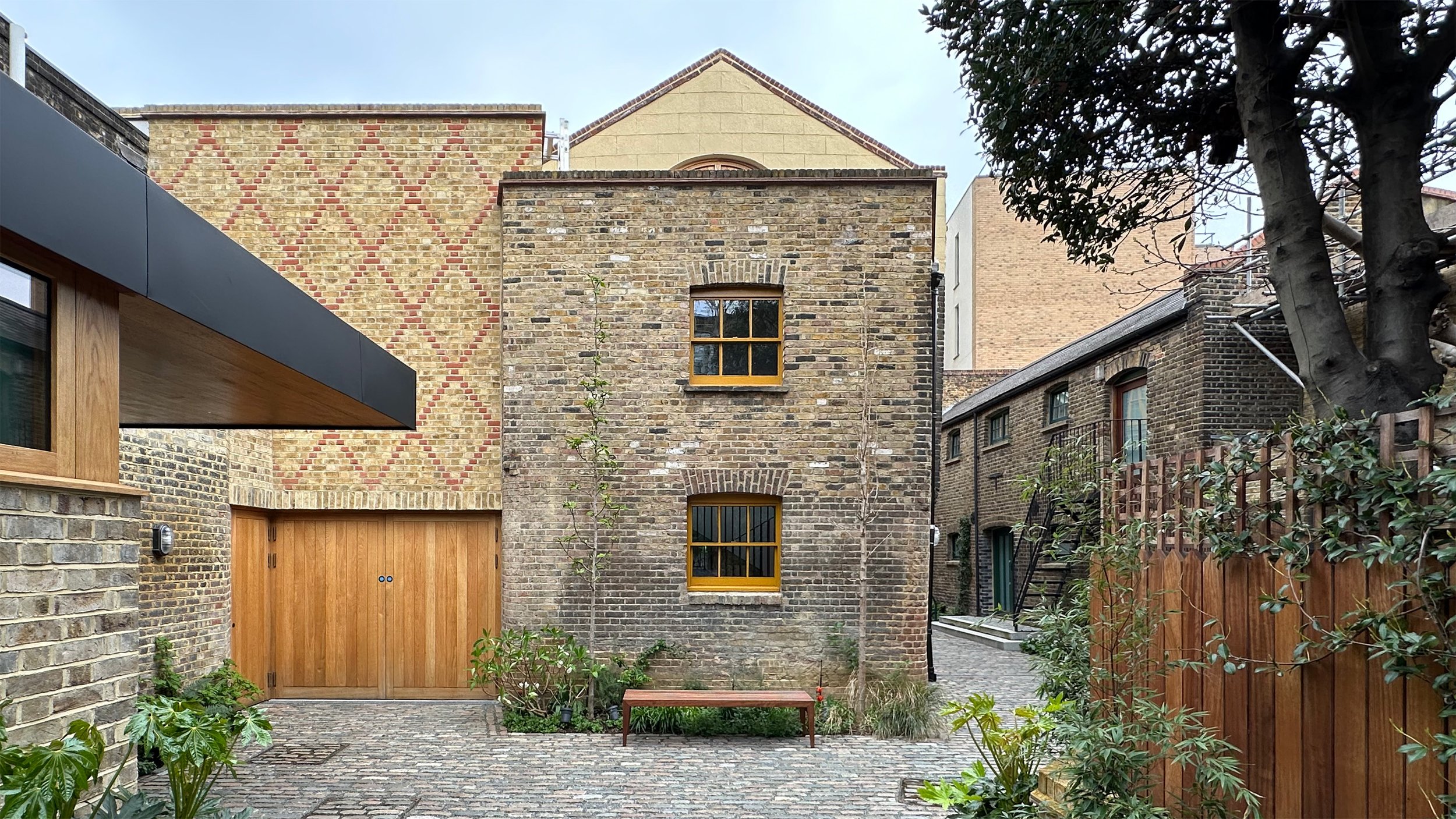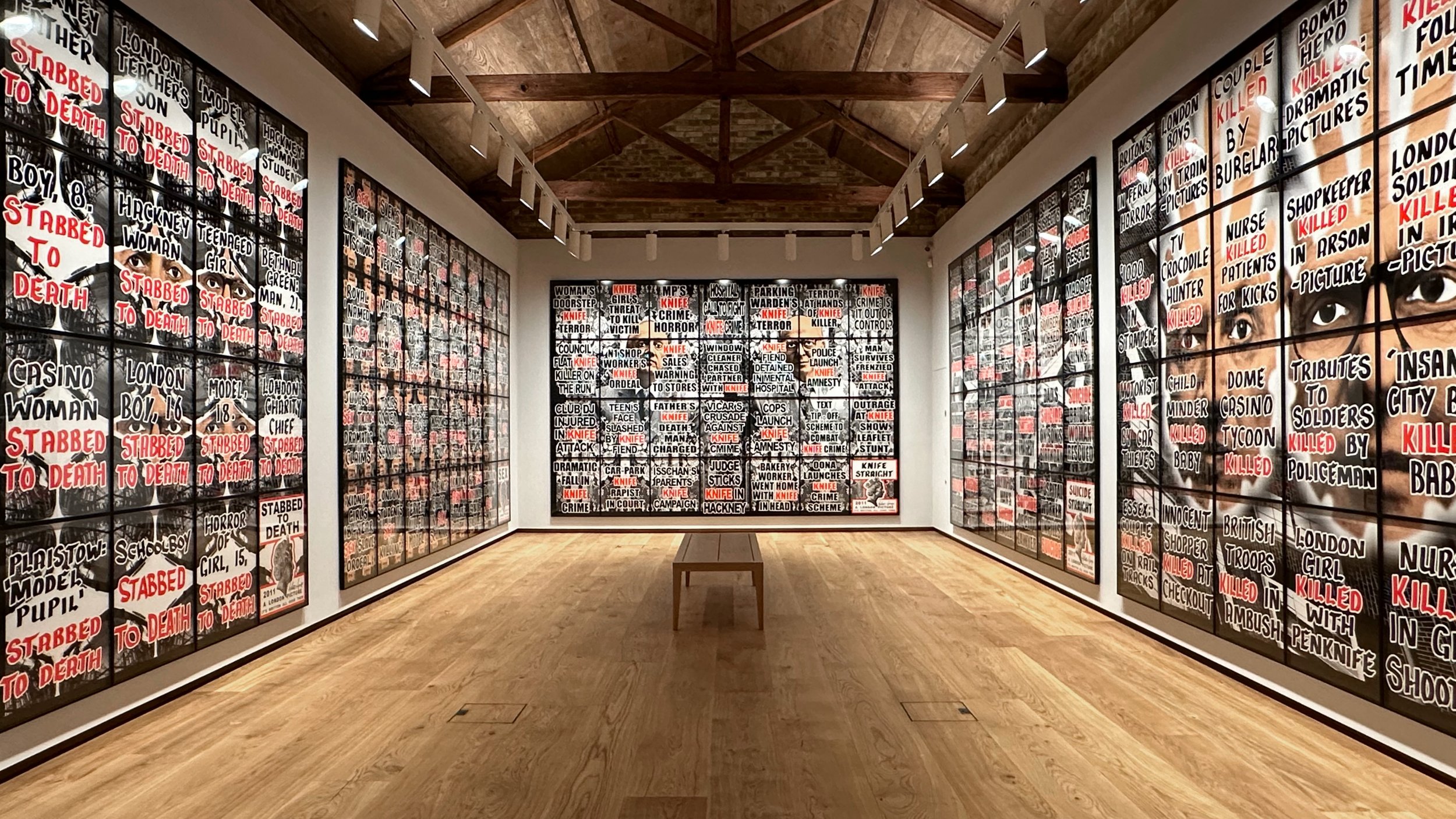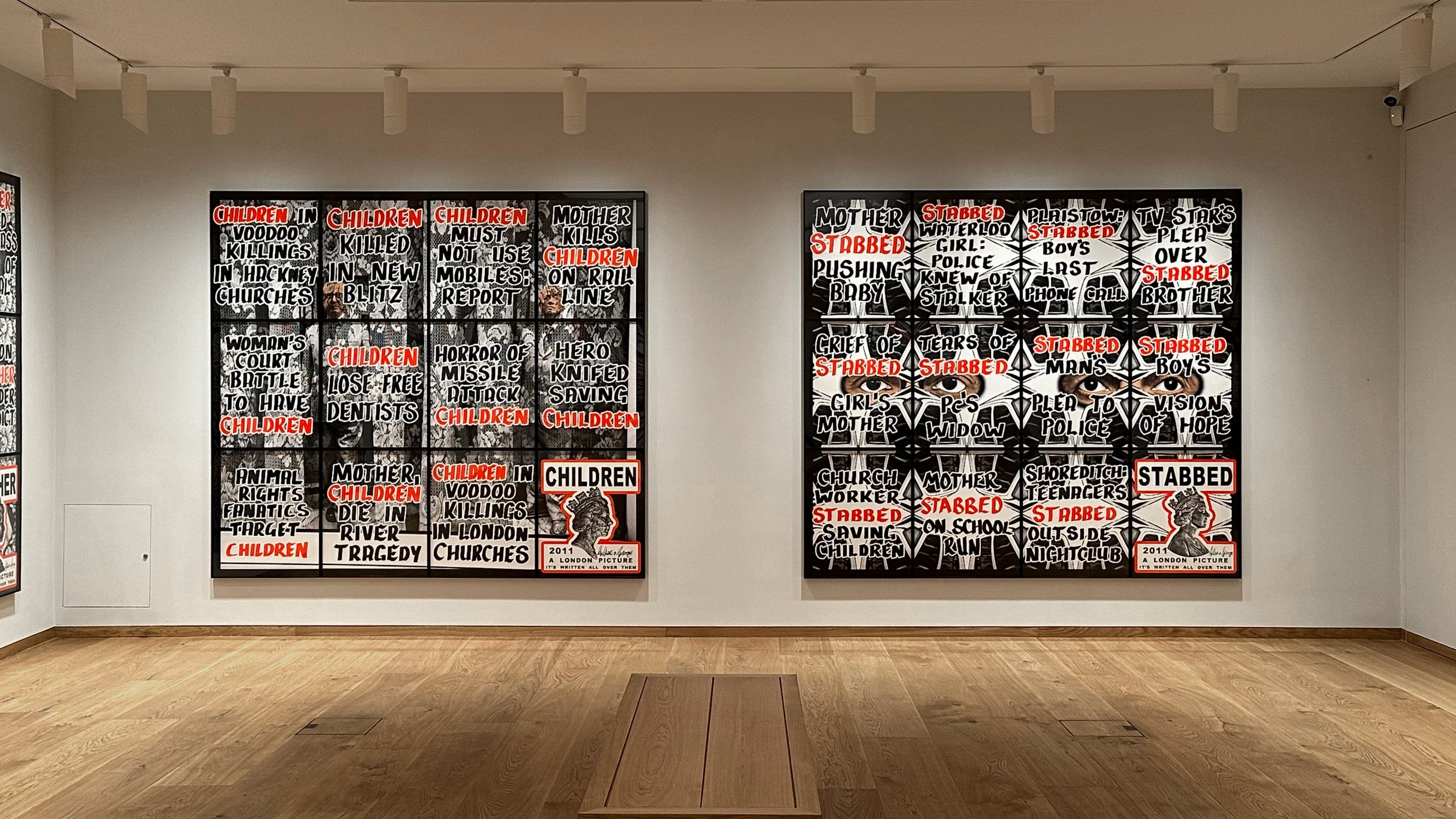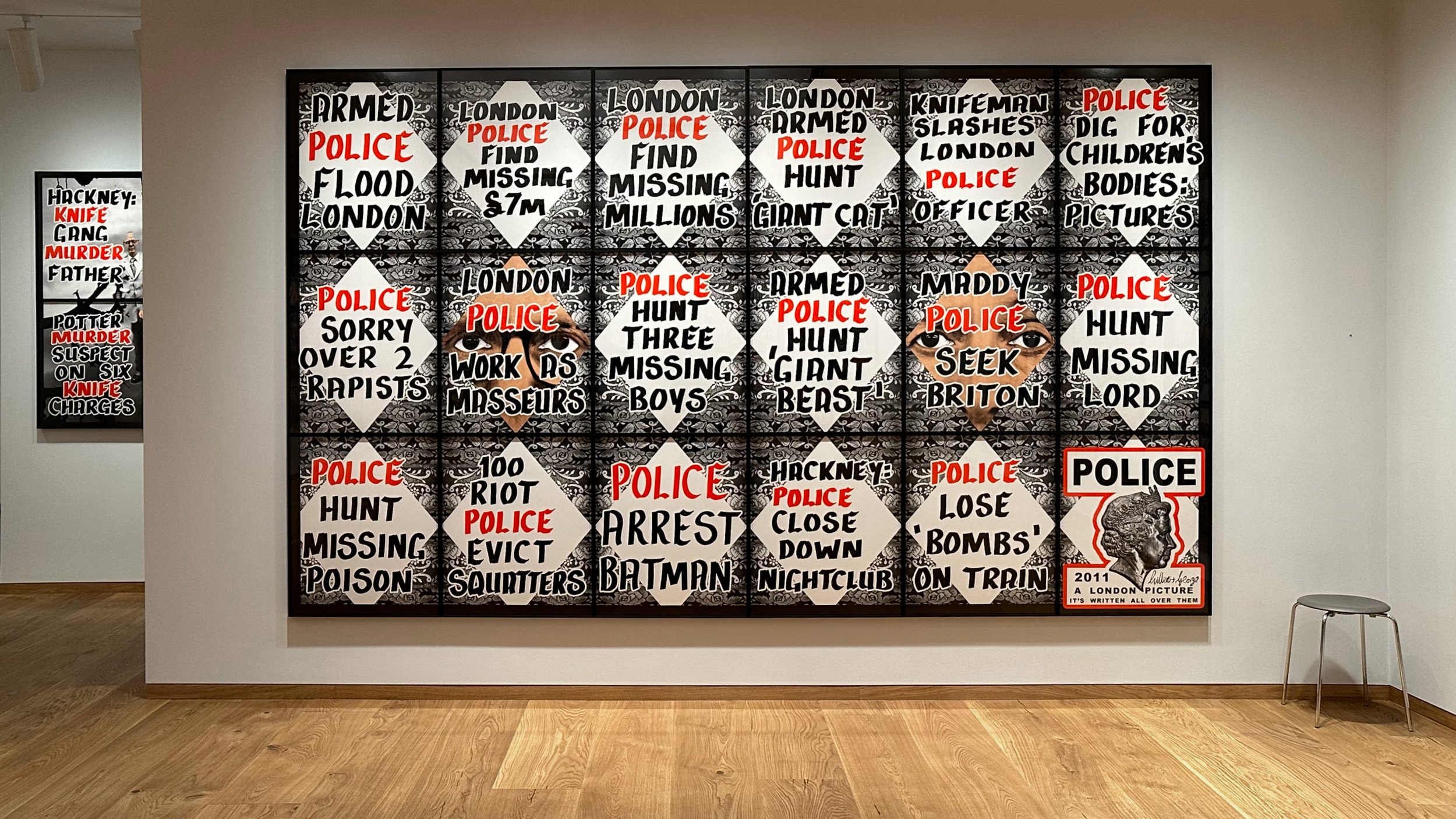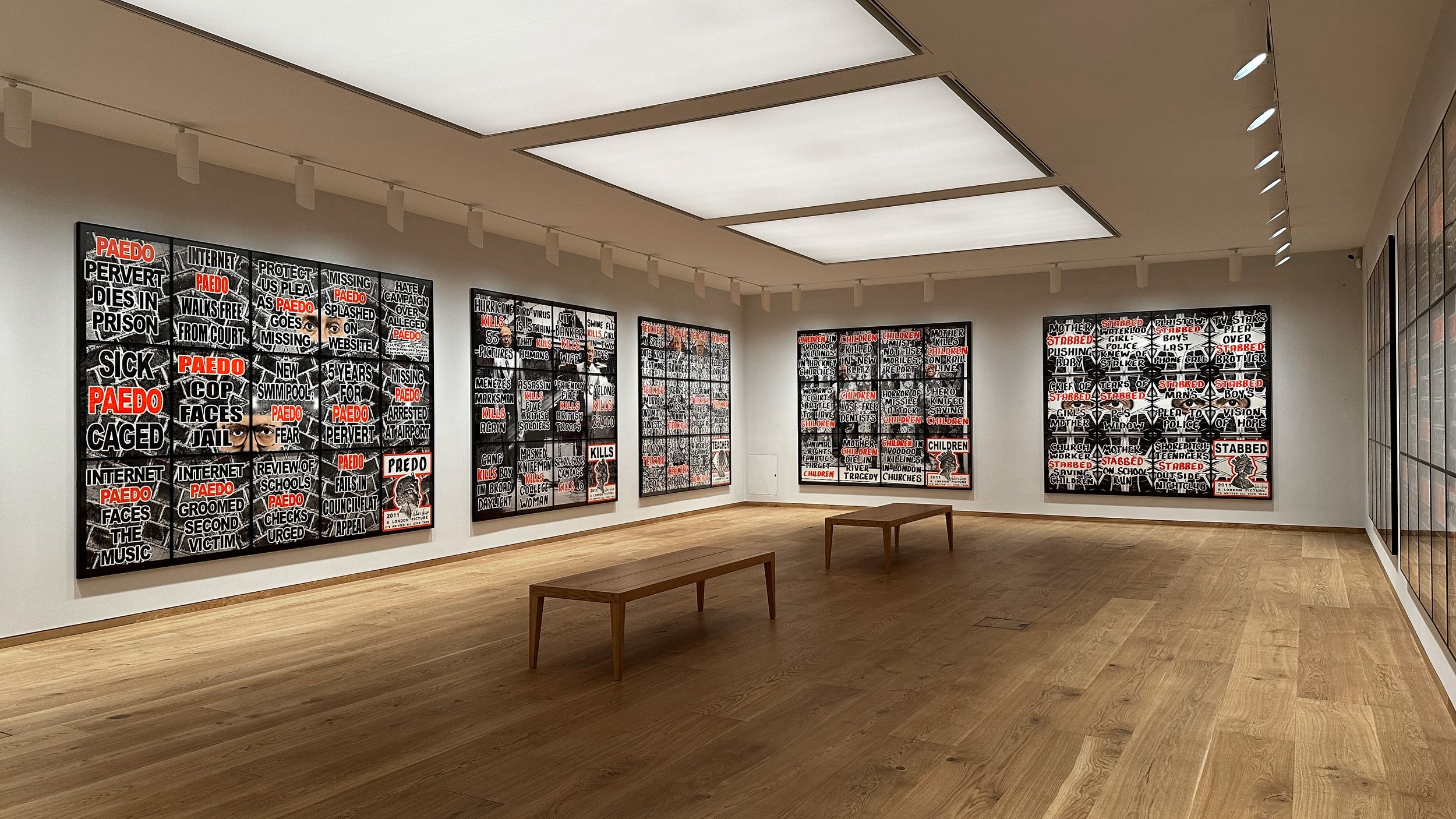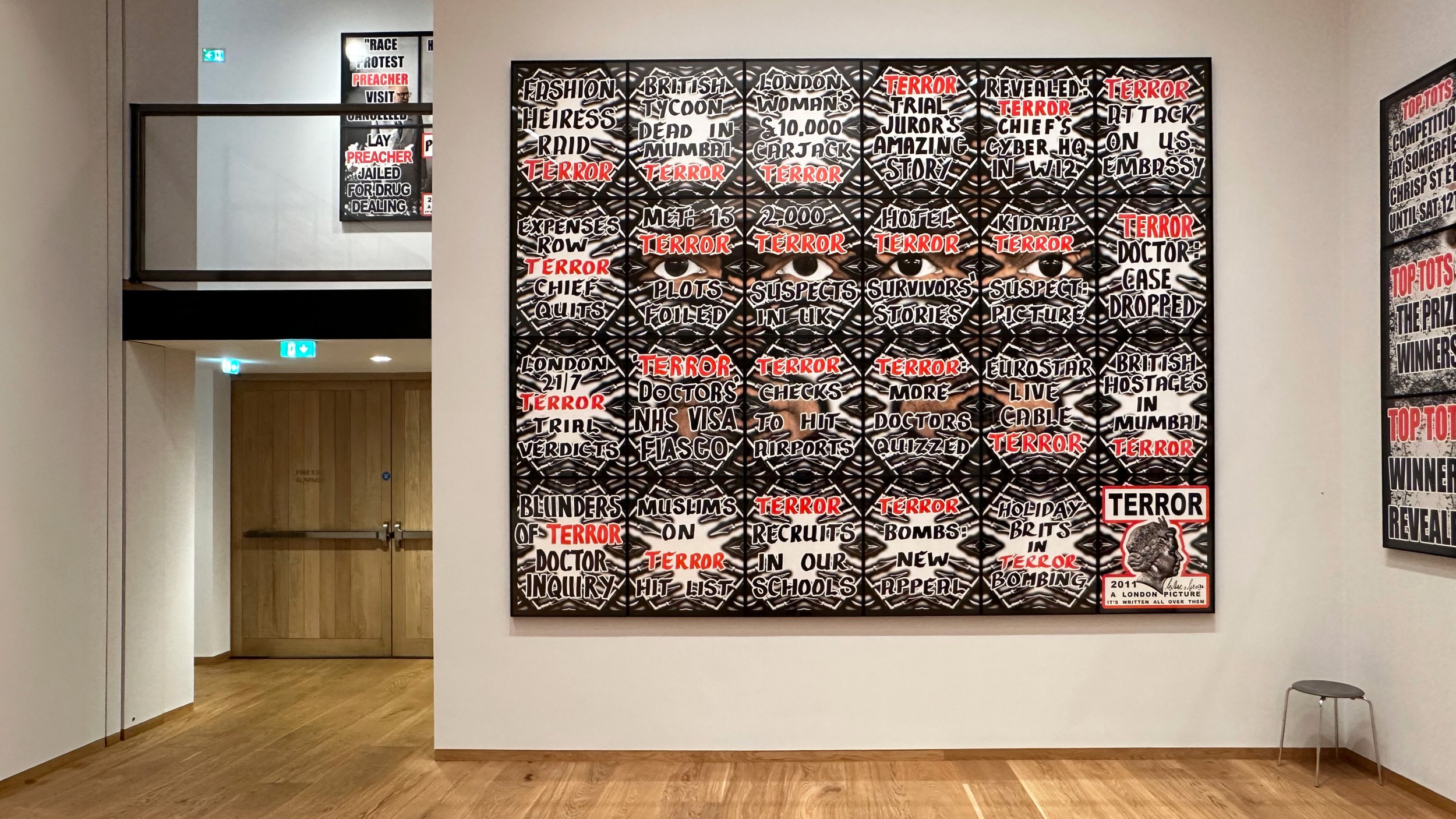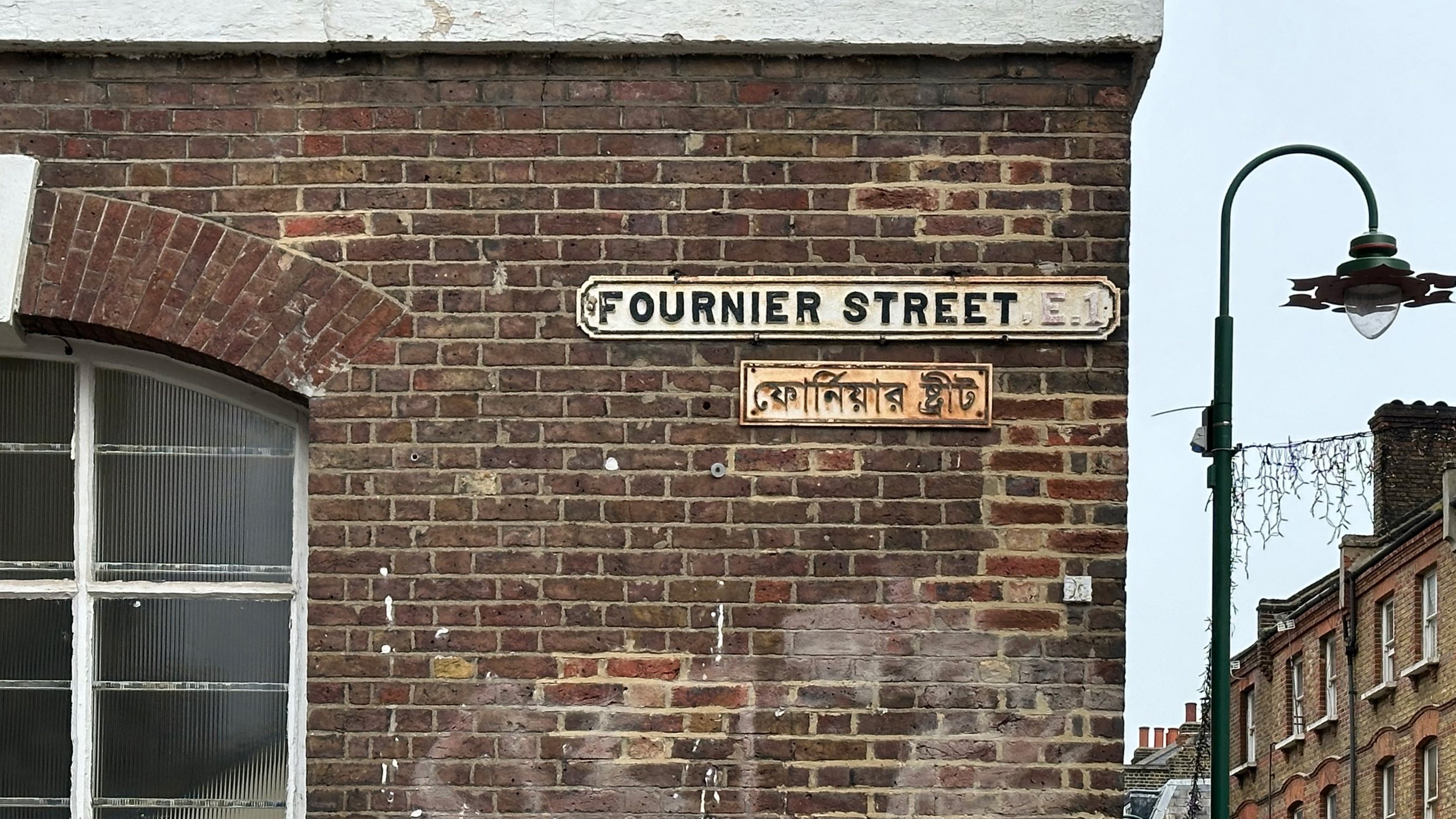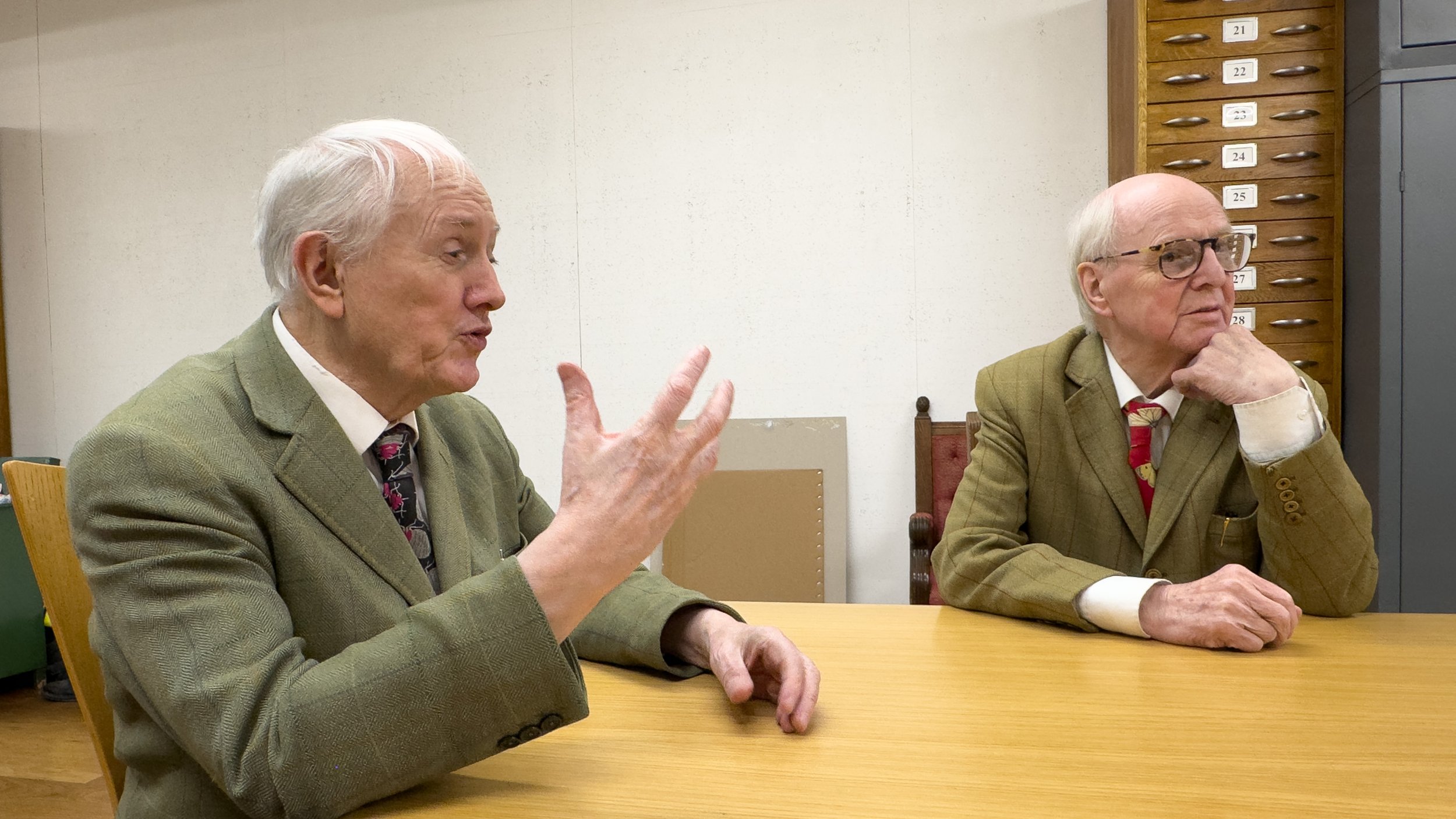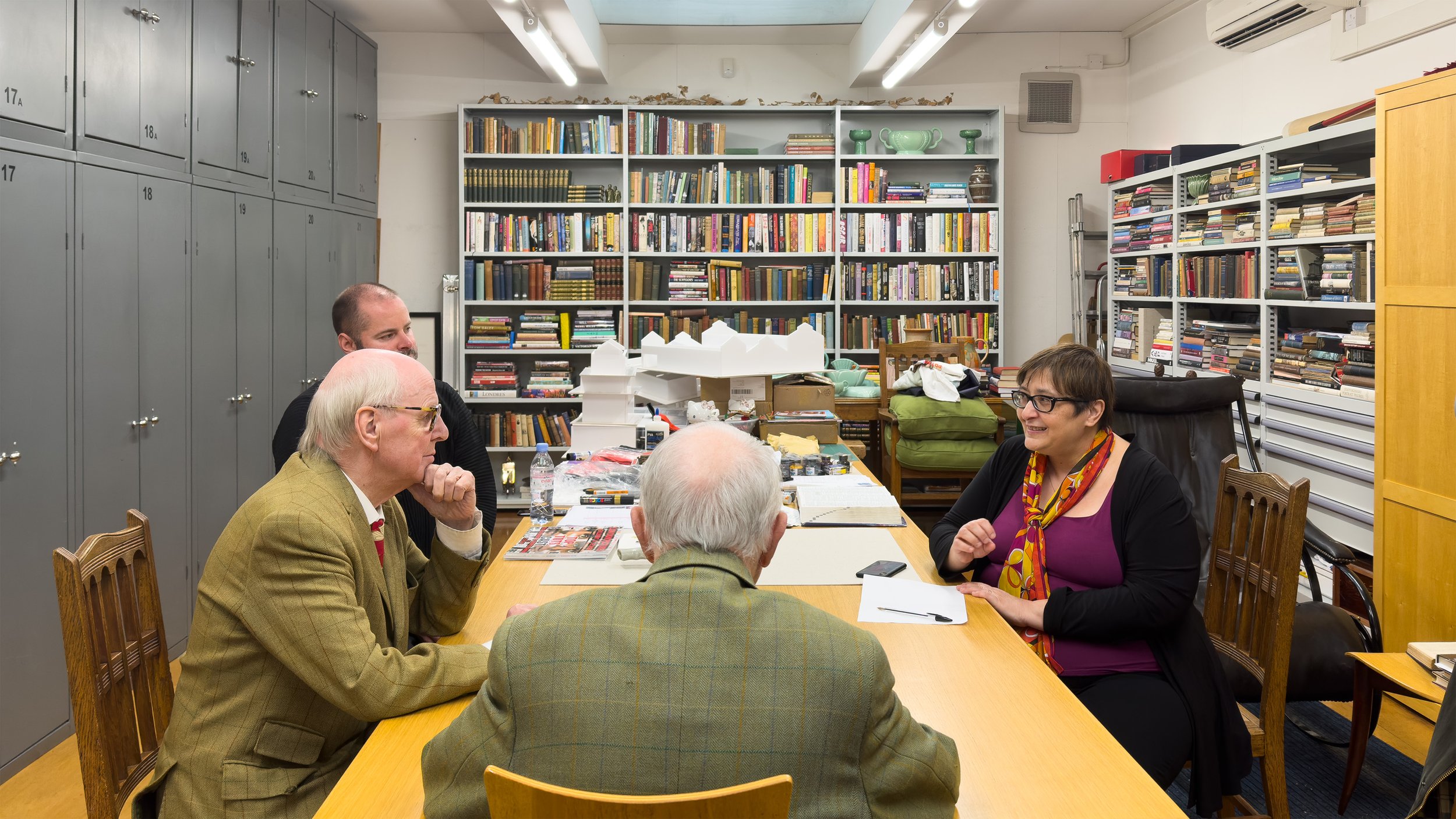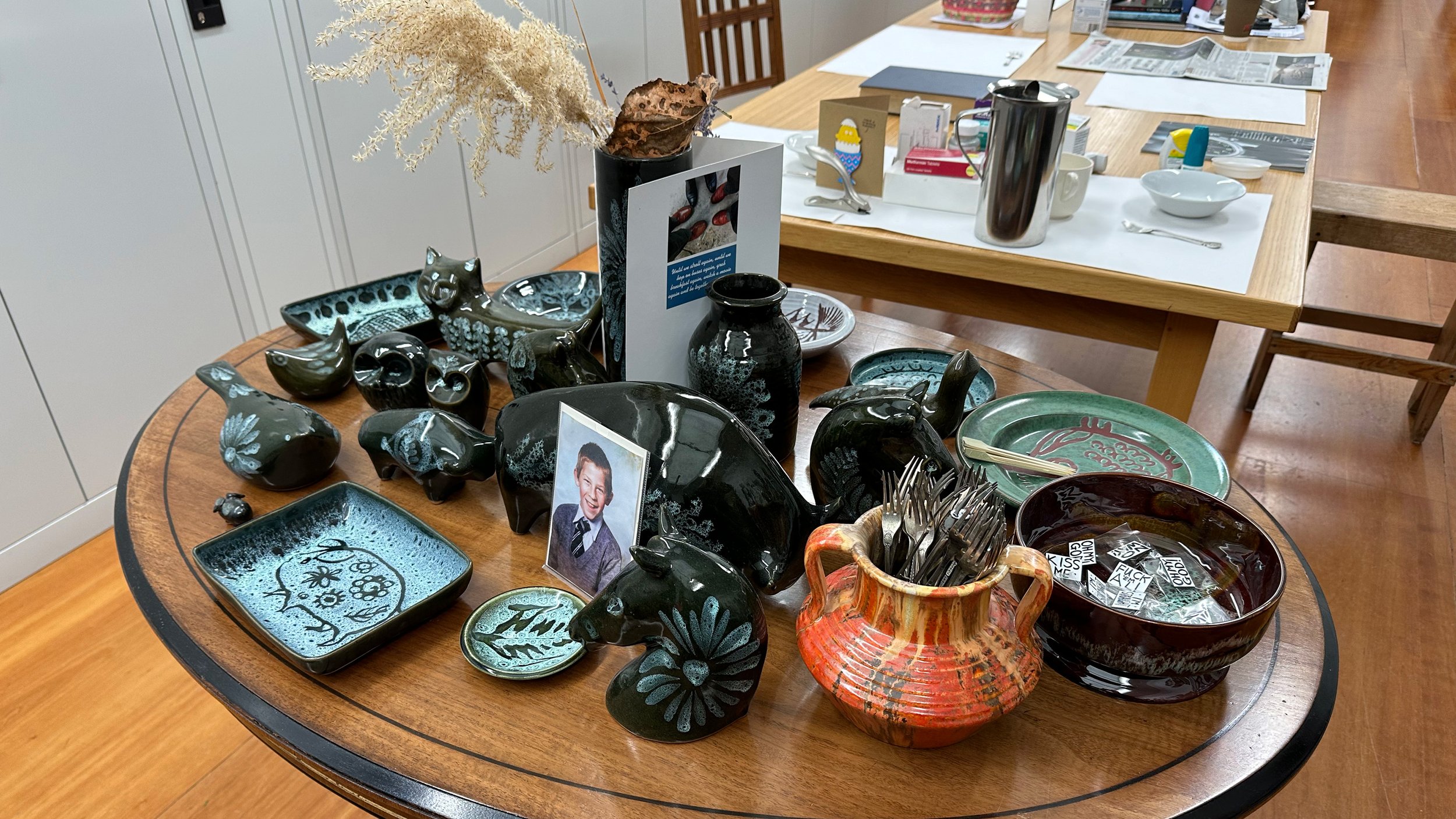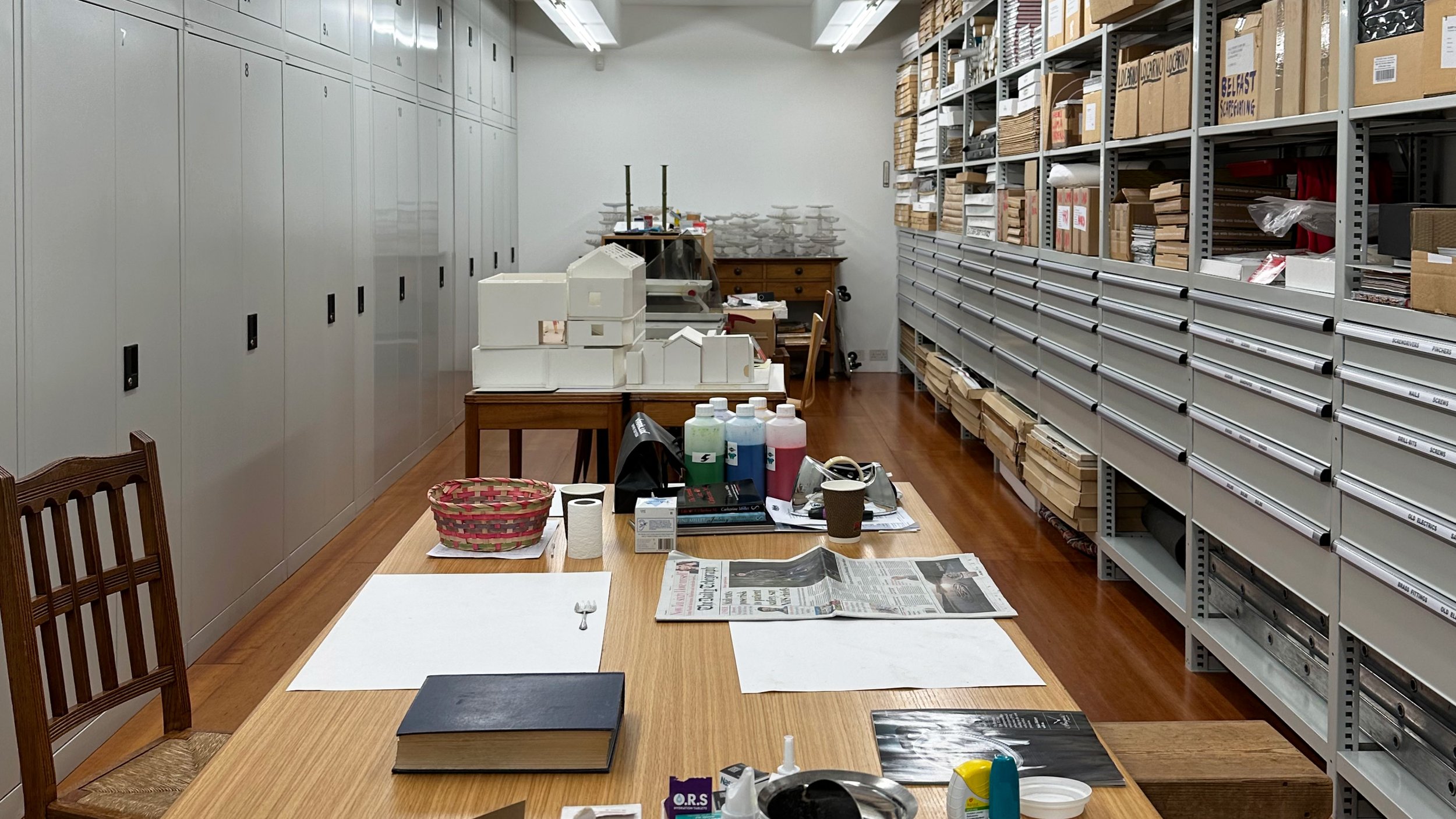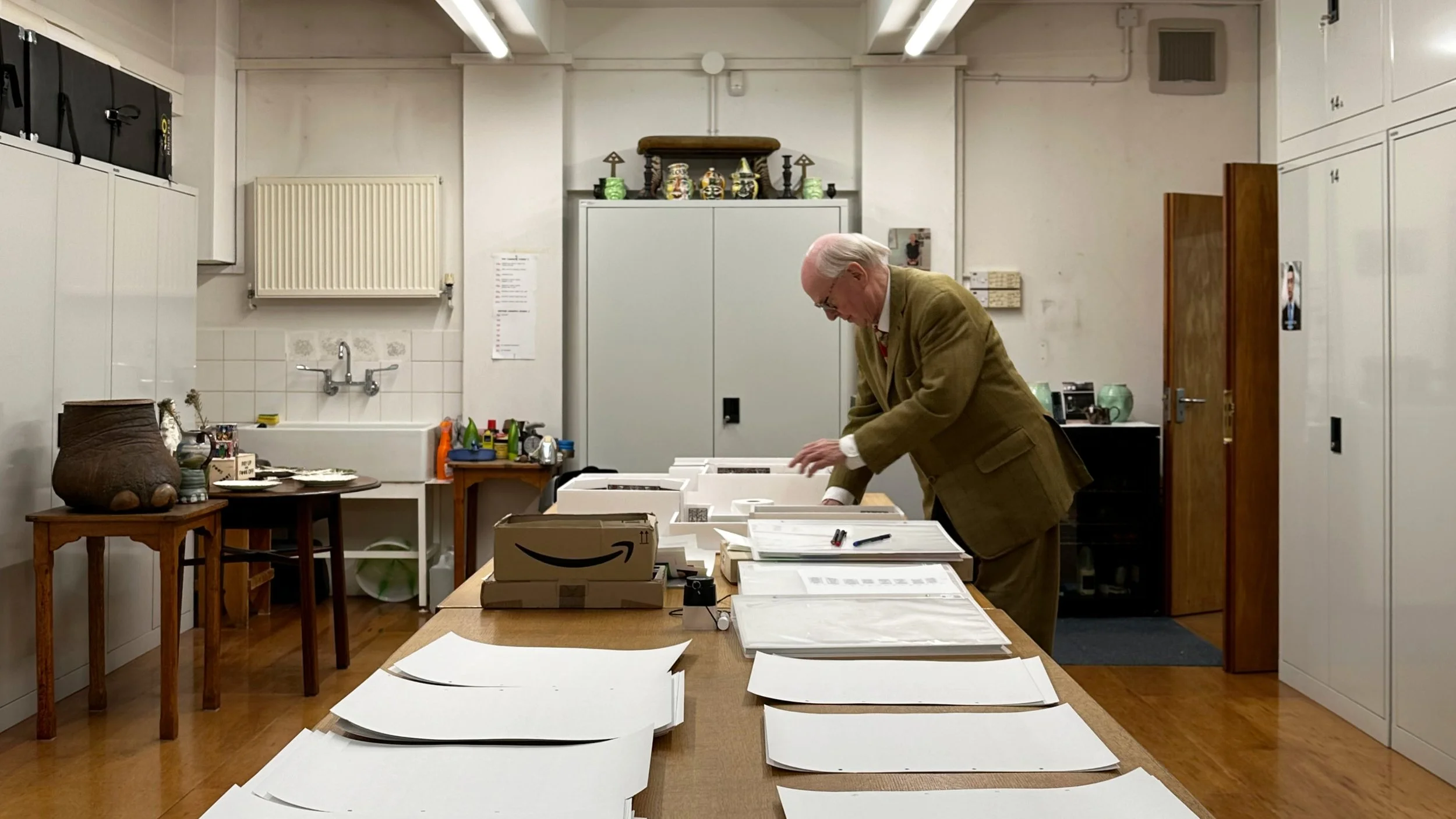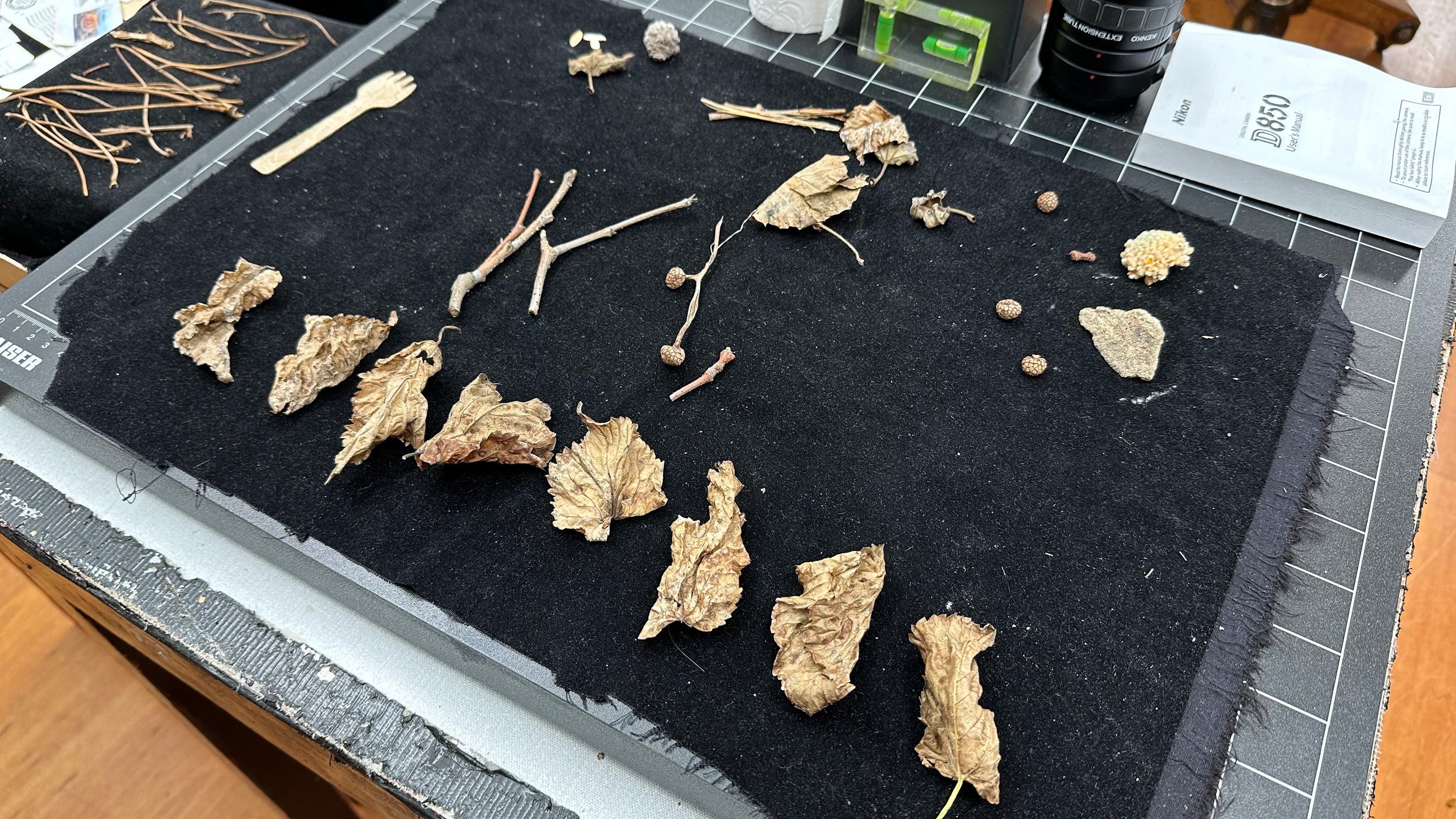LONDON PICTURES – In conversation with Gilbert & George
Ever since they first met at London’s Central Saint Martin’s School of Art in 1967, Gilbert & George have been creating art together. Both the subjects and objects of their works, Gilbert Proesch (Italy, 1943) and George Passmore (United Kingdom, 1942) have challenged the boundaries of contemporary art for over 55 years, operating as a single artist.
Their art delves into life's complexity, often presented as large-scale installations comprised of multiple framed panels resembling windows into their world. These compositions feature intricate layers and textures, with the artists either gazing back at the observer or immersed in the depicted landscapes. Regardless of the scene, Gilbert & George consistently occupy the focal point of their artworks, maintaining a dynamic interaction with the viewer.
Prior to the debut of London Pictures at The Gilbert and George Centre, we were invited to an exclusive preview of the exhibition.
The Centre is situated in London’s Brick Lane area, housed within a former industrial building converted in 2022 to serve as a permanent exhibition space for the artists’ work, accessible to all free of charge. Seamlessly integrated into the gritty and vibrant atmosphere of East London, made of convenience stores, off-licences, nail shops, and tattoo parlours, the building mirrors the environment that has inspired Gilbert & George for decades. Spread across three galleries, it immediately imparts a sense of familiarity, almost feeling like an extension of the artists’ nearby studio and home.
Since its opening, last year, the Centre has welcomed over forty thousand visitors and art enthusiasts. More than a decade after the global tour debut of London Pictures, the Centre now features 28 out of the original 292 artworks, many of which are being exhibited in the UK for the first time.
The London Pictures draw inspiration from a collection of 3,712 newsstand posters, stolen by the artists over the years. These posters, designed to capture attention with minimal words against black and white backgrounds, depict the harsh realities of London life, evoking imagery reminiscent of a Charles Dickens novel infused with a contemporary twist.
Following a private tour of the gallery, the artists welcomed us into their home and studio on Fournier Street. Upon stepping through their front door, we were enveloped in the magnificent world of Gilbert & George. Everywhere, signs of their creativity and imagination, along with their sources of inspiration, told their story even before we engaged in a lively conversation about art, society, and the intricacies of life.
In a heartfelt tribute to London, you've said, "London is the most important part of our inspiration. It is all that surrounds us." Your focus on places entrenched in everyday life is evident in London Pictures and much of your artwork. How do you keep finding inspiration in what others might see as ordinary?
(George): We consider ourselves privileged to reside in a culturally rich neighbourhood with a deep history of diversity, from its roots in Roman times - our place is built over a Roman cemetery - to its vibrant Jewish presence and the influx of artists seeking affordability. This amalgamation of cultures and experiences provides an endless well of inspiration for us.
You're deeply involved in the world around you, approaching it with fresh eyes every day.
(Gilbert): That’s the essence of being an artist.
What motivates and inspires you? What fuels your passion?
(George): Our passion for art is our driving force.
We have crafted a big living sculpture because we are always part of it. We are right at the heart of our art. Everything we do, we are speaking through it. It’s quite exciting, for us, and it’s kind of fresh too. We embarked on this journey around the age of 14, determined to create a legacy. We are war babies, driven by the desire to never relive such turmoil again.
(Gilbert): We also come from a generation of students and teachers who believed mainly in formality. There were shapes, angles, circles, maybe curves and some colours. When we were students at St Martin’s no teacher discussed sex, money, race, religion, hope, fear, or love.
(George): Fortunately, there were artists who transcended these constraints. Our dear friend Carl Andre, who recently passed away, was one such artist. His departure saddened us deeply as we were very fond of him. Despite being known as a formalist, he defied expectations. He embraced life, indulged in drinking, and appreciated women. Whenever he visited London, he made a point to see us, and likewise, when we were in New York, he always treated us to dinner at a ‘communist’ restaurant. Carl was a wonderful contradiction, embodying what art should strive to be.
You also embrace contradiction, and provocation. Is this deliberate, aimed at eliciting reactions, or simply a means of self-expression?
(George): This is our religion and, in a way, we prefer to think of it as "conversion" rather than provocation. Our aim is to engage and transform the viewer's perspective, and we did manage to convert many! (He laughs, Ed.).
Your art has a sense of immediacy to it. What’s the ultimate message behind it?
(George): Our art reflects the complexity of life, capturing the essence of our experiences and observations in a rapidly changing world.
(Gilbert): It’s a language. People can understand it because they are part of it.
Your London Pictures appear to effortlessly merge ordinary scenes with sensational headlines. What's the purpose behind this blending?
(George): We must remember the piece from the title, that’s the idea.
(Gilbert): We also aim to bridge the gap between the ordinary and the extraordinary, bringing the sensational into the realm of daily life, where viewers can immediately relate and engage with our art.
Talking about the extraordinary, you frequently include Queen Elizabeth II in your artwork, and she is also present in each panel of London Pictures. What's the reason behind this choice?
(George): Yes, although we haven't received an invitation to the palace, yet!
We admire the British monarchy. There's a common belief among young people that art leans towards the left. We believe that's oversimplified. You can be an artist while supporting the monarchy and good behaviour. Being a wild rebel isn't a requirement to be an artist. You can be a well-mannered one.
Speaking of London Pictures, Queen Elizabeth was synonymous with London. She often appeared in the titles. She wasn't just a Queen; she was an extraordinary woman. The British monarchy holds a unique place compared to others in Europe. Why not embrace it? People worldwide respected Queen Elizabeth not just because she was a queen, but because she was Elizabeth—a true inspiration. Now, her son has strong responsibilities to fulfil. He has diverse interests and embodies a modern approach to kingship.
The use of curtains and recurring motifs also characterise London Pictures. However, your presence feels almost detached, like observers of city life.
(Gilbert): Indeed, we used laced curtains and recurring motifs to symbolise our observation of urban existence. While our works are titled London Pictures, they capture a universal landscape which can be found in many cities worldwide, with us looking somewhat from distance, but always at the centre of our art.
Could you elaborate on the use of black and white, as well as the colour red for emphasising keywords?
(George): We are lucky because we originated from sculpture, and we didn't have access to colour. Painters had boxes of paint or crayons. We didn't have that luxury. Coming from a different background, we discovered the power of red and used it as a form of graffiti to make our art confrontational, portraying it in a way that speaks to the viewer. We're not aiming to depict an easy landscape; instead, we're capturing the confrontational nature of life that characterises all major cities.
Have you ever felt compelled to document cities beyond London in your artwork?
(Gilbert): Not quite. Not even London, we'd argue. All our inspiration stems from this area of London where we have resided and worked for over 55 years. Our studio, located here at number 12, began as a ground-floor flat with just two rooms. Over time, through the sale of artwork, we acquired number 8, and more recently, we expanded to include the Centre.
Your accessibility to the public through the Centre is remarkable. Was this intentional?
(George): Yes, it was. We recognised a need to make art more accessible, inspired by our own experiences of waiting years to see exhibitions of living artists' work. Our Centre aims to bridge this gap, ensuring our art is within reach of all who wish to experience it.
As two individuals forming one living sculpture, have differing visions ever posed challenges?
(Gilbert): What do you think? (He laughs, Ed.).
Success was our top priority and we worked together to achieve it, surpassing any differences in vision. We had to succeed, and we did!
(George): The thing is, the moment we left college, we thought, "That's it," feeling like we were stepping out of the empty world of student life. We weren't receiving any more subsidies. While our peers were getting grants or part-time teaching gigs at art schools, being two people, we had no such options. So, we found ourselves wandering around London aimlessly, just walking every day. By some stroke of luck, we stumbled into a second-hand shop and came across the record Underneath the Arches, the one that inspired the Singing Sculpture. We didn't know the song, but we were drawn to the title because, in 1969, we lived amidst vast hostels for troubled individuals, thousands of them, many scarred by the wars and the pre-decriminalisation era's strict sex laws.
So, Underneath the Arches symbolised all these people to us. What a life they had! Now, they've all passed on, and we're the only ones left. They've been replaced by young drug addicts—the next generation. Change is constant. It's like the building at the end of our street: once a French church, then a synagogue, now a mosque. What's next? Why can't we predict it? We should be able to, shouldn't we?
Your entry into the art world was quite radical and unconventional. You began by declaring, "We are the work!" and even after many years, your art still holds significance.
(Gilbert): We aimed to leave a lasting impact, such as with the Drinking Sculpture or our Nature pieces in 1971. Initially, we didn't anticipate their success. In 1971, we held a show of colour paintings and sold all of them. Following that, we ventured to New York for our first exhibition with Ileana Sonnabend in Soho, located at 420 West Broadway. This marked the onset of the art scene in downtown New York. Previously, galleries had been situated in upscale areas, but we took a chance by exhibiting in this gritty part of Manhattan.
(George): Overnight, it became a tremendous success. We were among four galleries opening on the same night, drawing crowds from all over New York to the Downtown district. The news spread, even reaching the radio, and a police helicopter hovered over the city, puzzled by the sudden surge of people heading downtown. Later, we presented the Living Sculpture, catching the attention of government representatives worried about overcrowding in the building. It was a tricky situation, raising concerns about the stability of the structure.
Was that the moment when you thought: “We’ve made it”?
(George): Absolutely, we had indeed made it! In a major way, and practically overnight. We're not sure anything quite like that had ever happened before. And breaking into New York wasn't easy, considering they're usually the ones making waves in Europe.
What are you most proud of achieving as artists?
(Gilbert): Being two individuals united in artistic expression for over five decades: it is an extraordinary accomplishment. Our partnership has provided unwavering support and a platform to continually create and inspire.
(Written in collaboration with Danilo De Rossi)
In the cover:
Gilbert & George outside their studio in Fournier Street
Images © Danilo De Rossi
Gallery 1: The exhibition at the Gilbert and George Centre
Gallery 2: The studio in Fournier Street


